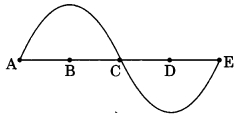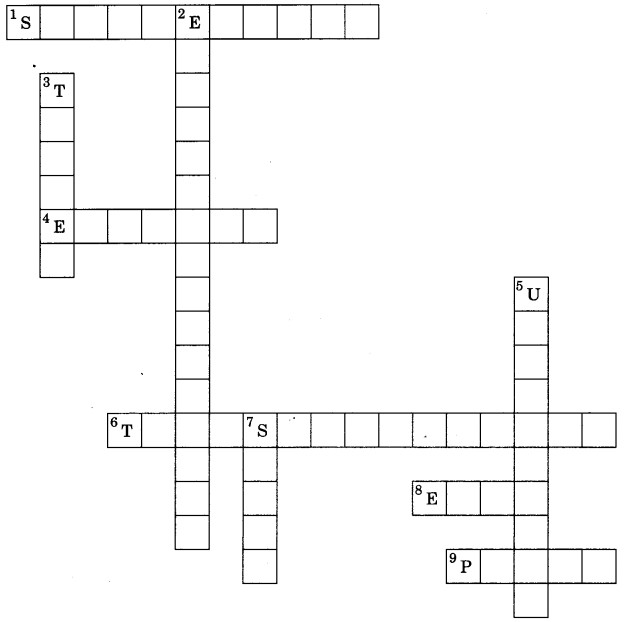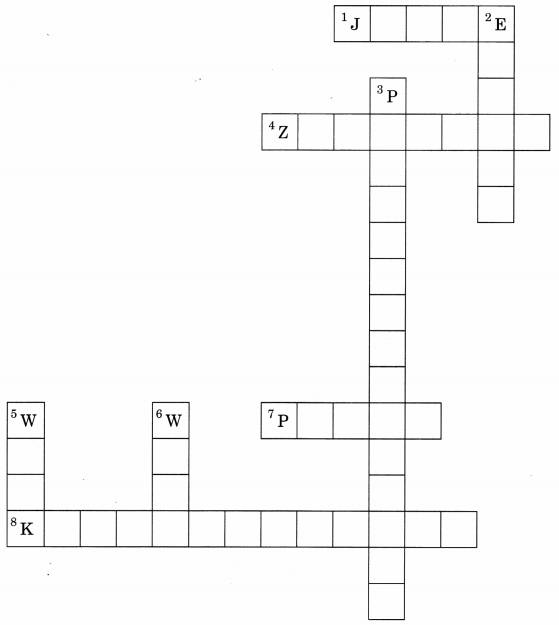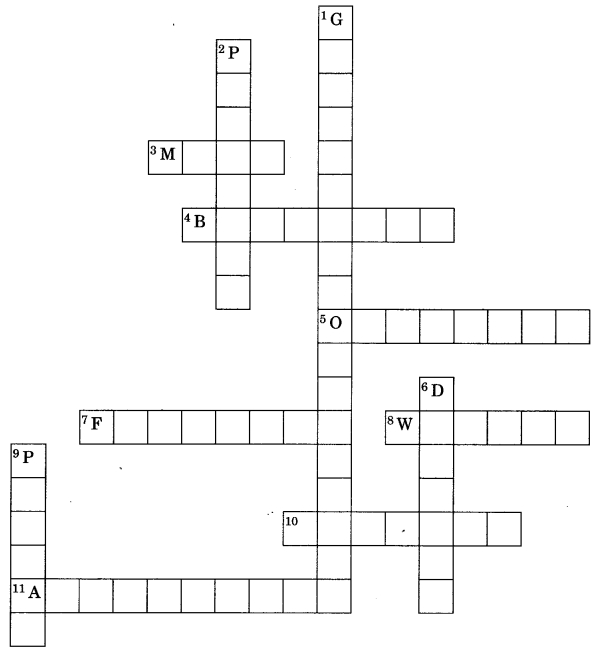Check the below NCERT MCQ Questions for Class 9 Science Chapter 14 Natural Resources with Answers Pdf free download. MCQ Questions for Class 9 Science with Answers were prepared based on the latest exam pattern. We have Provided Natural Resources Class 9 Science MCQs Questions with Answers to help students understand the concept very well. https://mcqquestions.guru/mcq-questions-for-class-9-science-chapter-14/
You can refer to NCERT Solutions for Class 9 Science Chapter 14 Natural Resources to revise the concepts in the syllabus effectively and improve your chances of securing high marks in your board exams.
Natural Resources Class 9 MCQs Questions with Answers
Natural Resources Class 9 MCQ Chapter 14 Question 1.
The atmosphere of the Earth is heated by radiations which are mainly
(a) radiated by the Sun
(b) re-radiated by land
(c) re-radiated by water
(d) re-radiated by land and water
Answer
Answer: (d) re-radiated by land and water
Natural Resources MCQ Class 9 Chapter 14 Question 2.
If there were no atmosphere around the Earth, the temperature of the Earth will
(a) increase
(b) go on decreasing
(c) increase during day and decrease during night
(d) be unaffected
Answer
Answer: (c) increase during day and decrease during night
Class 9 Science Chapter 14 MCQ Question 3.
What would happen, if all the oxygen present in the environment is converted to ozone?
(a) We will be protected more
(b) It will become poisonous and kill living forms
(c) Ozone is not stable, hence it will be toxic
(d) It will help harmful Sun radiations to reach Earth and damage many life forms.
Answer
Answer: (b) It will become poisonous and kill living forms
Class 9 Natural Resources MCQ Chapter 14 Question 4.
One of the following factors does not lead to soil formation in nature
(a) the Sun
(b) water
(c) wind
(d) polythene bags
Answer
Answer: (d) polythene bags
Natural Resources Class 9 MCQ With Answers Chapter 14 Question 5.
The two forms of oxygen found in the atmosphere are
(a) water and ozone
(b) water and oxygen
(c) ozone and oxygen
(d) water and carbon dioxide
Answer
Answer: (c) ozone and oxygen
MCQ Of Natural Resources Class 9 Chapter 14 Question 6.
The process of nitrogen-fixation by bacteria does not take place in the presence of
(a) molecular form of hydrogen
(b) elemental form of oxygen
(c) water
(d) elemental form of nitrogen
Answer
Answer: (b) elemental form of oxygen
MCQ On Natural Resources Class 9 Chapter 14 Question 7.
Rainfall patterns depend on
(a) the underground water table
(b) the number of water bodies in an area
(c) the density pattern of human population in an area
(d) the prevailing season in an area
Answer
Answer: (b) elemental form of oxygen
MCQ Natural Resources Class 9 Chapter 14 Question 8.
Among the given options, which one is not correct for the use of large amount of fertilisers and pesticides?
(a) They are eco-friendly
(b) They turn the fields barren after some time
(c) They adversely affect the useful component from the soil
(d) They destroy the soil fertility
Answer
Answer: (a) They are eco-friendly
MCQ On Natural Resources With Answers Pdf Chapter 14 Question 9.
The nitrogen molecules present in air can be converted into nitrates and nitrites by
(а) a biological process of nitrogen fixing bacteria present in soil
(b) a biological process of carbon fixing factor present in soil
(c) any of the industries manufacturing nitrogenous compounds
(d) the plants used as cereal crops in field
Answer
Answer: (а) a biological process of nitrogen fixing bacteria present in soil
Class 9 Science Ch 14 MCQ Question 10.
One of the following processes is not a step involved in the water-cycle operating in nature
(a) evaporation
(b) transpiration
(c) precipitation
(d) photosynthesis
Answer
Answer: (d) photosynthesis
Ch 14 Science Class 9 MCQ Question 11.
The term “water-pollution” can be defined in several ways. Which of the following statements does not give the correct definition?
(a) The addition of undesirable substances to water bodies
(b) The removal of desirable substances from water bodies
(c) A change in pressure of the water bodies
(d) A change in temperature of the water bodies
Answer
Answer: (c) A change in pressure of the water bodies
Class 9 Science Chapter 14 MCQ Questions Question 12.
Which of the following is not a greenhouse gas?
(a) Methane
(b) Carbon dioxide
(c) Carbon monoxide
(d) Ammonia
Answer
Answer: (d) Ammonia
Natural Resources MCQ Questions And Answers Chapter 14 Question 13.
Which step is not involved in the carbon-cycle?
(o) Photosynthesis
(b) Transpiration
(c) Respiration
(d) Burning of fossil fuels
Answer
Answer: (b) Transpiration
MCQs On Natural Resources Class 9 Chapter 14 Question 14.
‘Ozone-hole’ means
(a) a large sized hole in the ozone layer
(b) thinning of the ozone layer
(c) small holes scattered in the ozone layer
(d) thickening of ozone in the ozone layer
Answer
Answer: (b) thinning of the ozone layer
Class 9 Science Natural Resources MCQ Chapter 14 Question 15.
Ozone-layer is getting depleted because of
(a) excessive use of automobiles
(b) excessive formation of industrial Units
(c) excessive use of man-made compounds containing both fluorine and chlorine
(d) excessive deforestation.
Answer
Answer: (c) excessive use of man-made compounds containing both fluorine and chlorine
Question 16.
Which of the following is a recently originated problem of environment?
(a) Ozone layer depletion
(b) Greenhouse effect
(c) Global warming
(d) All of the above
Answer
Answer: (d) All of the above
Question 17.
When we breathe in air, nitrogen also goes inside along with oxygen. What is the fate of this nitrogen?
(a) It moves along with oxygen into the cells
(b) It comes out with the CO2 during exhalation
(c) It is absorbed only by the nasal cells
(d) Nitrogen concentration is already more in the cells so it is not at all absorbed.
Answer
Answer: (b) It comes out with the CO2 during exhalation
Question 18.
Top-soil contains the following
(а) Humus and living organisms only
(b) Humus and soil particles only
(c) Humus, living organisms and plants
(d) Humus, living organisms and soil particles.
Answer
Answer: (d) Humus, living organisms and soil particles.
Question 19.
Choose the correct sequences
(a) CO2 in atmosphere → decomposers → organic carbon in animals → organic carbon in plants
(b) CO2 in atmosphere → organic carbon in plants → organic carbon in animals → inorganic carbon in soil
(c) Inorganic carbonates in water organic carbon in plants → organic carbon in animals → scavengers
(d) Organic carbon in animals → decomposers → CO2 in atmosphere → organic carbon in plants
Answer
Answer: (b) CO2 in atmosphere → organic carbon in plants → organic carbon in animals → inorganic carbon in soil
Question 20.
Major source of mineral in soil is the
(a) parent rock from which soil is formed
(b) plants
(c) animals
(d) bacteria
Answer
Answer: (a) parent rock from which soil is formed
Question 21.
Total Earth’s surface covered by water is
(a) 75%
(b) 60%
(c) 85%
(d) 50%
Answer
Answer: (a) 75%
Question 22.
Biotic component of the biosphere is not constituted by
(a) producers
(b) consumers
(c) decomposer
(d) air
Answer
Answer: (d) air
Question 23.
An increase in carbon dioxide content in the atmosphere would not cause
(a) more heat to be retained by the environment
(b) increase in photosynthesis in plants
(c) global warming
(d) abundance of desert plants
Answer
Answer: (d) abundance of desert plants
Question 24.
Oxygen is returned to the atmosphere mainly by
(a) burning of fossil fuel
(b) respiration
(c) photosynthesis
(d) fungi
Answer
Answer: (c) photosynthesis
Question 25.
Low visibility during cold weather is due to
(a) formation of fossil fuel
(b) unbumt carbon particles or hydrocarbons suspended in air
(c) lack of adequate power supply
(d) none of these
Answer
Answer: (b) unbumt carbon particles or hydrocarbons suspended in air
Question 26.
Growth of lichens on barren rocks is followed by the growth of
(a) moss
(b) ferns
(c) gymnosperms
(d) algae
Answer
Answer: (a) moss
Question 27.
Marked temperature changes in an aquatic environment can affect
(a) breeding of animals
(b) more growth of aquatic plants
(c) process of digestion in animals
(d) availability of nutrients.
Answer
Answer: (a) breeding of animals
Question 28.
Soil erosion can be prevented by
(a) raising forests
(b) deforestation
(c) excessive use of fertiliser
(d) overgrazing by animals
Answer
Answer: (a) raising forests
Question 29.
What happens when rain falls on soil without vegetational cover?
(a) Rain water percolates in soil efficiently
(b) Rain water causes loss of surface soil
(c) Rain water leads to fertility of the soil
(d) Rain water does not cause any change in soil
Answer
Answer: (b) Rain water causes loss of surface soil
Question 30.
Oxygen is harmful for
(a) ferns
(b) nitrogen fixing bacteria
(c) chara
(d) mango tree
Answer
Answer: (b) nitrogen fixing bacteria
Fill in the blanks
1. The outer crust of the Earth is called …………….
Answer
Answer: lithosphere
2. The life-supporting zone of the Earth where the atmosphere, the hydrosphere and the lithosphere interact and make life possible, is known as the ……………
Answer
Answer: biosphere
3. Eukaryotic cells and many prokaryotic cells, need ……………. to break down …………….. molecules and get energy for their activities.
Answer
Answer: oxygen, glucose
4. The temperature ranges from …………… to …………… on the moon as it does not have atmosphere.
Answer
Answer: -190° C, 110° C
5. The atmosphere can be heated from below by the …………….. that is reflected back or re-radiated by the land or water bodies.
Answer
Answer: radiation
6. The condensation of water is facilitated if some particles could act as ………………. for drops to form around.
Answer
Answer: nucleus
7. Rainfall patterns are decided by the prevailing ……………..
Answer
Answer: wind patterns
8. The suspended particles released on burning fossil fuels could be unburnt carbon particles or substances called ……………
Answer
Answer: hydrocarbons
9. Fresh water is found frozen in the …………….. at the two poles and on snow covered mountains.
Answer
Answer: Ice caps
10. …………….. grows on the surface of rocks, release certain substances that cause the rock surface to powder down and form a thin layer of soil.
Answer
Answer: Lichens
11. …………….. is a major factor in deciding the soil structure because it causes the soil to become more porous.
Answer
Answer: Humus
12. Nitrogen-fixing bacteria are found in the roots of ……………. in special structures called root nodules.
Answer
Answer: legumes
13. During ……………. the high temperatures and pressures created in the air convert nitrogen into oxides of nitrogen.
Answer
Answer: lightning
14. An increase in the carbon dioxide content in the atmosphere would cause more heat to be retained by the atmosphere and lead to ……………..
Answer
Answer: global warming
15. Oxygen from the atmosphere is used up in three processes, namely …………….. respiration and in the formation of ……………….
Answer
Answer: combustion, oxides of nitrogen
Match the following columns
| Column I | Column II |
| (a) Ozone hole | (i) Soil structure |
| (b) Lithosphere | (ii) Root nodules of legumes |
| (c) Lichen | (iii) Acid rain |
| (d) Humus | (iv) Greenhouse gas |
| (e) Carbon dioxide | (v) Outer crust |
| (f) Soil erosion | (vi) Formation of soil |
| (g) Frozen fresh water | (vii) CFCs |
| (h) Oxides of nitrogen | (viii) Ice caps at poles |
| (i) Nitrogen fixing bacteria | (ix) Deforestation |
Answer
Answer:
| Column I | Column II |
| (a) Ozone hole | (vii) CFCs |
| (b) Lithosphere | (v) Outer crust |
| (c) Lichen | (vi) Formation of soil |
| (d) Humus | (i) Soil structure |
| (e) Carbon dioxide | (iv) Greenhouse gas |
| (f) Soil erosion | (ix) Deforestation |
| (g) Frozen fresh water | (viii) Ice caps at poles |
| (h) Oxides of nitrogen | (iii) Acid rain |
| (i) Nitrogen fixing bacteria | (ii) Root nodules of legumes |
We hope the given NCERT MCQ Questions for Class 9 Science Chapter 14 Natural Resources with Answers Pdf free download will help you. If you have any queries regarding Natural Resources CBSE Class 9 Science MCQs Multiple Choice Questions with Answers, drop a comment below and we will get back to you soon.




